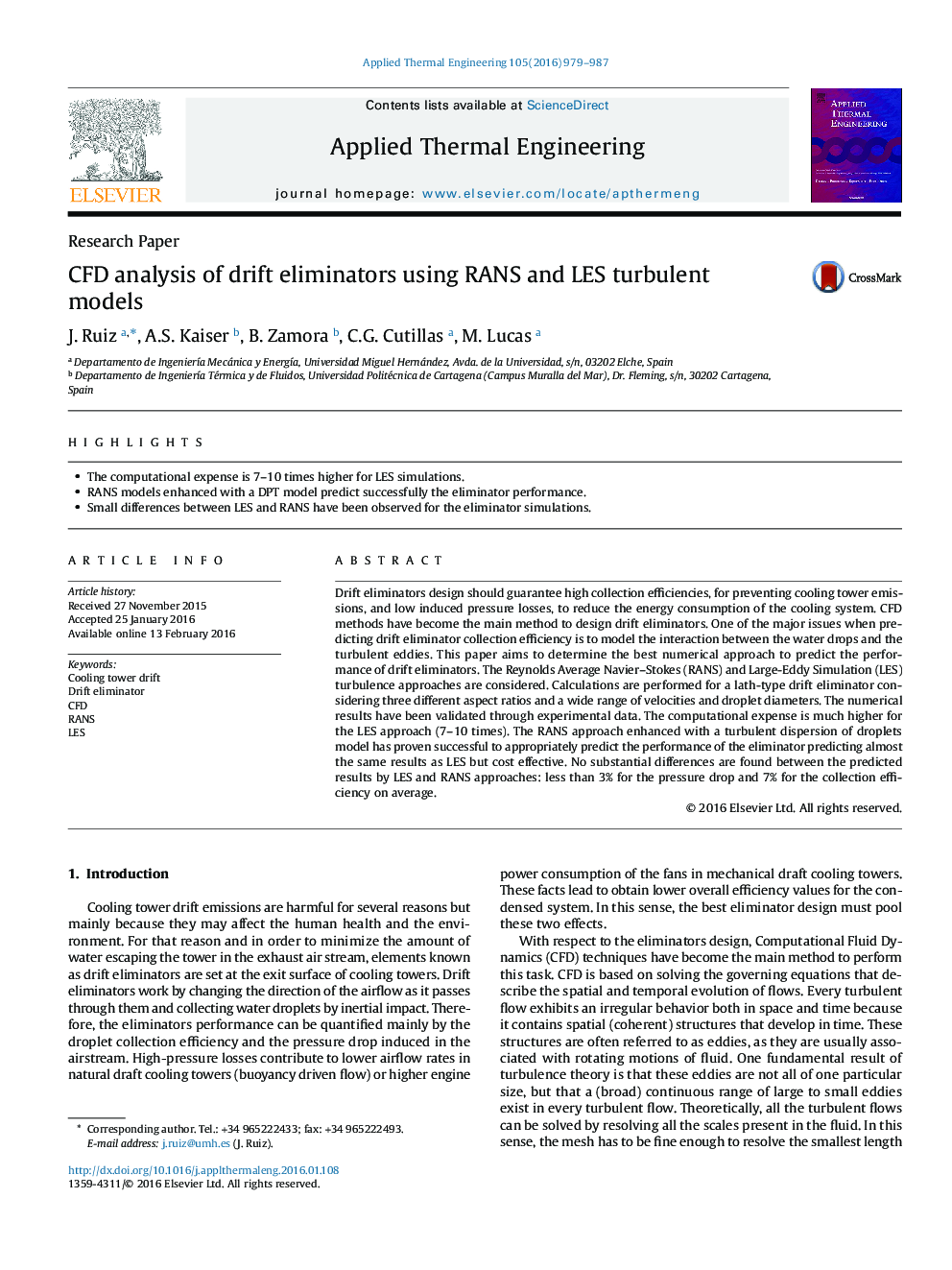| کد مقاله | کد نشریه | سال انتشار | مقاله انگلیسی | نسخه تمام متن |
|---|---|---|---|---|
| 644650 | 1457123 | 2016 | 9 صفحه PDF | دانلود رایگان |
• The computational expense is 7–10 times higher for LES simulations.
• RANS models enhanced with a DPT model predict successfully the eliminator performance.
• Small differences between LES and RANS have been observed for the eliminator simulations.
Drift eliminators design should guarantee high collection efficiencies, for preventing cooling tower emissions, and low induced pressure losses, to reduce the energy consumption of the cooling system. CFD methods have become the main method to design drift eliminators. One of the major issues when predicting drift eliminator collection efficiency is to model the interaction between the water drops and the turbulent eddies. This paper aims to determine the best numerical approach to predict the performance of drift eliminators. The Reynolds Average Navier–Stokes (RANS) and Large-Eddy Simulation (LES) turbulence approaches are considered. Calculations are performed for a lath-type drift eliminator considering three different aspect ratios and a wide range of velocities and droplet diameters. The numerical results have been validated through experimental data. The computational expense is much higher for the LES approach (7–10 times). The RANS approach enhanced with a turbulent dispersion of droplets model has proven successful to appropriately predict the performance of the eliminator predicting almost the same results as LES but cost effective. No substantial differences are found between the predicted results by LES and RANS approaches: less than 3% for the pressure drop and 7% for the collection efficiency on average.
Journal: Applied Thermal Engineering - Volume 105, 25 July 2016, Pages 979–987
